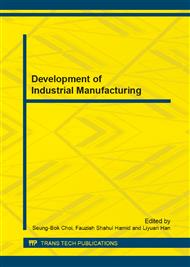p.719
p.723
p.727
p.731
p.736
p.741
p.746
p.752
p.759
SIWPSO-Based Controller Design for AUV
Abstract:
A strategy is proposed for a control system with a linearized autonomous underwater vehicle (AUV) dynamic model. The proposed approach combines the particle swarm optimization (PSO) and proportional-integral-derivative (PID) controller to adjust the parameters of the linearized dynamic model. The linear and nonlinear model are both considered in our work. The proposed techniques is verified by using the simulation results to the model of AUV.
Info:
Periodical:
Pages:
736-740
Citation:
Online since:
February 2014
Price:
Сopyright:
© 2014 Trans Tech Publications Ltd. All Rights Reserved
Share:
Citation:


